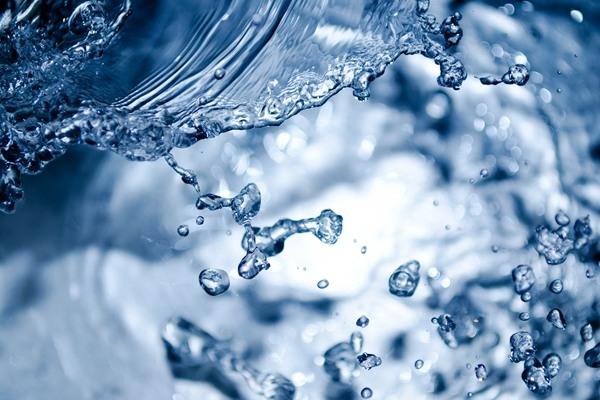1. Textile printing and dyeing: (1) Sizing process: water emulsion type silicone defoaming agent, such as: silicone polyether, the addition amount in the sizing tank is 0.2¬0.25g/L
(2), chemical fiber oiling agent: chemical fiber oiling agent Add 0.02¬0.04% water emulsion type defoamer. Silicone oil should be included in the chemical fiber oil formulation.
(3) Desizing and refining: use polyether silicone.
(4) Bleaching: strong acidity, silicone defoamer.
(5) Dyeing: silicone emulsion defoamer. It is best to use polyether silicone for jet dyeing, which is defoaming at high temperature and soluble in water at low temperature, and does not stain the fabric.
2. Petrochemical industry: (1) Drilling: Ethyl silicone oil (or methyl silicone oil layer emulsion) is used as a mud additive.
(2) Oil production: oil and gas separation, defoaming stick. The melting point is 2.8-13.9℃ higher than the wellhead foam temperature.
(3) Natural gasoline absorption: Use gasoline to mix dimethyl silicone oil into a 2% solution.
(4) Refining: Defoamer is added in vacuum distillation, the color of the distillate is improved, and the range of the distillate is relaxed. Diesel solution with silicone oil is commonly used.
(5) High-energy fuel (internal combustion, jet, aviation fuel) is dispersed in high flash point kerosene with cyanoalkyl polysiloxane, and then added to high-energy fuel as a high-efficiency defoamer.
(6) Asphalt and residual oil: the amount of silicone oil added is 0.2×10-6~2.0×10-6
(7) Delayed coking, decoking, and descaling: defoamer addition reference amount: 0.05~100×10-6
(8) Defoaming drilling fluid: high-viscosity sulfonated metal salt (calcium petroleum sulfonate: sodium sulfonated asphalt = 1:1), the addition amount of siloxane is about 100~400×10-6 or 5~15mg/Kg, Acid salt: Siloxane is preferably close to 1:1.
(9) Lubricants: such as internal combustion engines, automotive lubricants, metalworking fluids, compressor oils, etc.
3. Paper industry
(1) Pulping: Silicone emulsion defoamer (90g/T paper).
(2) Coated paper: coated paper, paper used for printing posters after calendering, and non-silicon defoamer is generally used for coating bubbles.
(3) Sewage treatment: water emulsion type organic silicon defoamer.
4. Application in coatings and inks I. Requirements for defoamers in coating production: (1) It has a certain affinity with the active substances on the foam surface, but it should be insoluble and insoluble in the bubble liquid;
(2) Surface The tension is lower than the surface tension of the bubble liquid and has a lower HLB value;
(3) The emulsion (latex) should be stabilized;
(4) The film cannot cause fish eyes and shrinkage after the coating is formed;
(5) Water-based coatings Use defoamer: Use more water-soluble substances, such as mineral oil, higher alcohols, and silicone resins. Silicone is the best defoamer for water-based coatings.
Antifoaming agent for non-aqueous coatings: commonly used substances that are difficult to dissolve in organic solvents, such as lower alcohols and silicone resins (the amount of silicone resin should be appropriate, if excessive, it is easy to shrink and cavities, and modified silicone resins are now used. Or emulsified silicone resin)
II. Silicone defoamers recommended for use in water-based coatings:
(1) Silicone oil and hydrophobic SiO2 mixture. Applicable: epoxy resin, casting, the amount of 0.3%; thermoplastic acrylic resin, spraying, the amount of 0.3%
(2) Polyether Application of mixture of polysiloxane and hydrophobic SiO2: thermosetting alkyd resin, 0.3% for dip coating, 0.1% for squeegee coating
(3) Mixture of hydrophobic SiO2, hydrocarbons, and silicone oil. Application: thermoplastic acrylic resin, printing, ink, dosage of 0.1 %; Air-drying acrylic resin, poured, the dosage is 0.5%.
(4) Silicone oil and hydrophobic SiO2 mixture emulsion Applicable: Alkyd modified styrene-acrylic resin, poured, the dosage is 0.5%
Polysiloxane and modified sodium tripolyphosphate are used as powder detergent additives. Dimethicone (1500c.s) emulsion containing 2~6% of SiO2 is mixed with anhydrous sodium tripolyphosphate. The amount of emulsion is 10~40. %, forming a hydrate as an additive.
Metal cleaning fluids require alkali resistance. It is best to add liquid products to be transparent and have defoaming activity.
6. Silicone defoamer for food industry
Food-specific polysiloxane resin: dimethyl polysiloxane as the main body, when the food containing less than 15% SiO2 is an aqueous solution, the emulsified product can be directly used for other oil-based products, and the dosage is controlled.

is one of the leading & professional manufacturers with more than 20 years' experience, have domestic top-level engineers in
silicone surfactant industry. We specialized in producing all kinds of SILICONE BASED new materials and specialized in research, production, sales and marketing in silicone-based performance materials. Provide good OEM&ODM service.Our products are mainly used in
polyurethane foam,
Agriculture,Coatings and Inks, Leather & Textiles, Pulp and Paper, Cosmetic industry, etc.